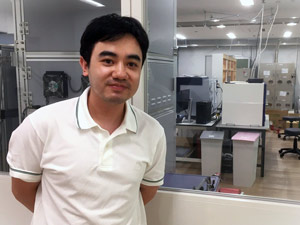
Figure 1: The chemical structure of the compensated antiferromagnet. Gold spheres represent cobalt atoms, blue spheres are niobium atoms, and gray spheres are sulfur atoms. © 2025 RIKEN Center for Emergent Matter Science
RIKEN physicists have found a magnetic material that converts heat into electricity with high efficiency, making it promising for use in energy-harvesting devices1.
Photos you take on your smartphone are saved as a series of zeros and ones in a ferromagnetic material-magnetic materials that resemble iron in that their magnetic moments all point in the same direction.
Ferromagnets are easy to manipulate, making it easy to save data. However, because their magnetic moments are all aligned, they generate strong magnetic fields, and so it is not possible to cram a lot of them into a small space.
Antiferromagnetic materials are the opposite to ferromagnetic ones in that their magnetic moments point alternately in opposite directions. Because their magnetic moments cancel out, it is possible to pack them much more tightly than ferromagnets. But the same property makes it tricky to read and write from them.
A special type of antiferromagnetic material known as non-coplanar antiferromagnets, in which the magnetic moments don't lie in the same plane, exhibits the best aspects of both materials. Like other antiferromagnetic materials, they have zero net magnetic field overall. But their magnetic building blocks are tetrahedrons, making them much easier to manipulate.
In addition to data storage, antiferromagnets are also promising for producing electricity from heat, and they could thus be used in energy-conversion devices.
Now, Duy Khanh Nguyen, who was based at the RIKEN Center for Emergent Matter Science at the time of the study, and co-workers have found a compensated antiferromagnet with non-coplanar spin texture that exhibits a very large heat-to-electricity conversion efficiency.
"We were surprised at how large the conversion efficiency for this material was despite its overall magnetization being tiny," says Nguyen, who is now at the University of Tokyo.
When the team modeled their material, they obtained excellent agreement with their experimental measurements.
The secret to the large conversion efficiency lies in the material's unique crystal, magnetic, and electronic structures and their symmetries. The interplay between them gives rise to hot spots of a 'fictitious' magnetic field within the material, which in turn causes the large conversion efficiency.
Nguyen and his team now intend to look for other compensated antiferromagnets that have even better properties. There are lots of possibilities for materials with the same structure, since the three elements making up the material can readily be substituted for other elements (Fig. 1).
"The chemical composition of this material is very flexible," notes Nguyen. "By adjusting its composition, we should be able to enhance the conversion efficiency."
The ability to simulate electronic properties using numerical calculations on large computer clusters will greatly aid the team's search.

Duy Khanh Nguyen and co-workers have observed a large topological Nernst effect in the chiral lattice antiferromagnet CoNb3S6. © 2025 RIKEN






